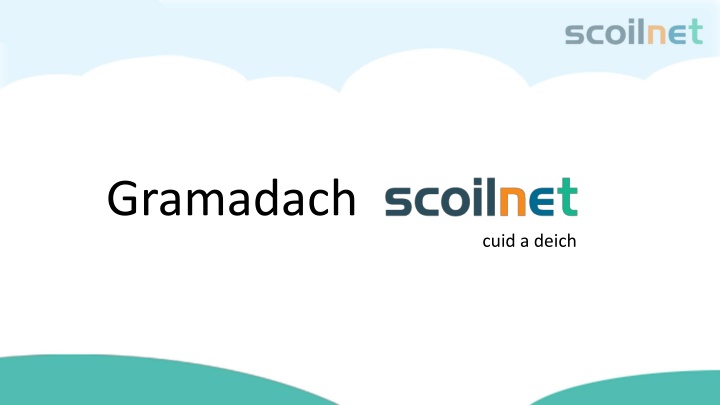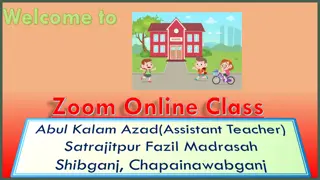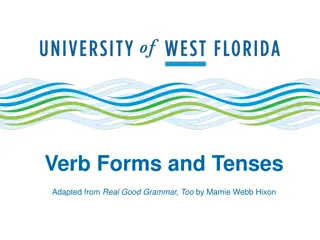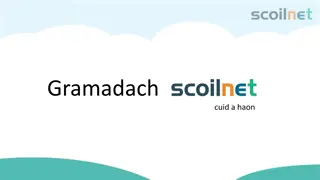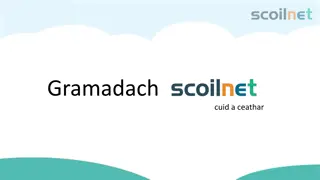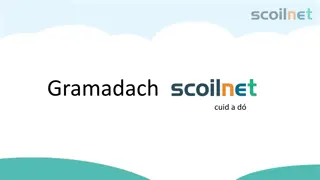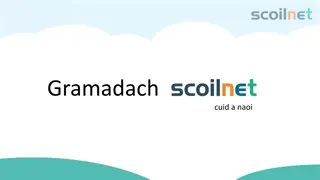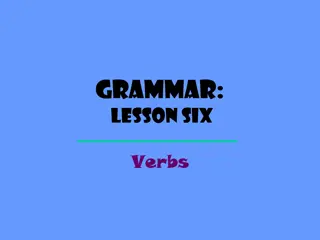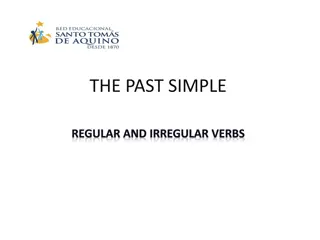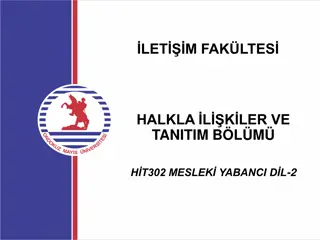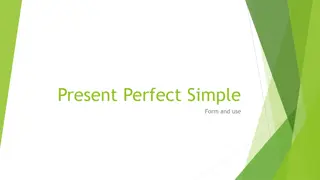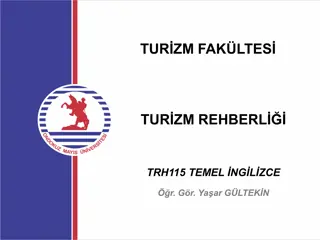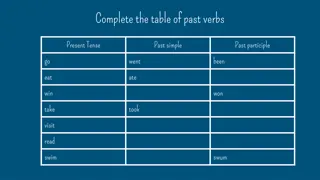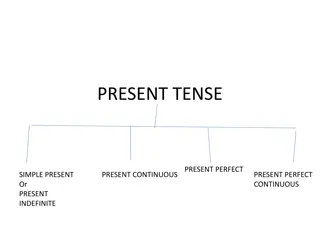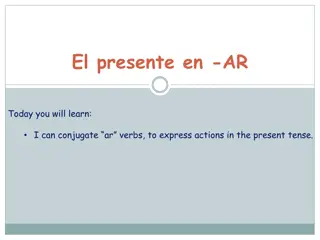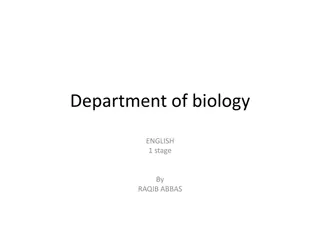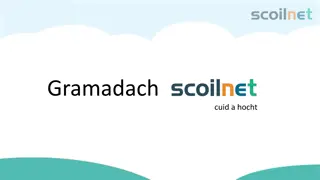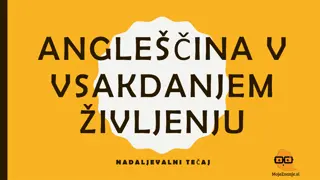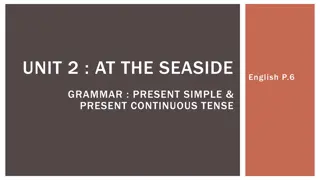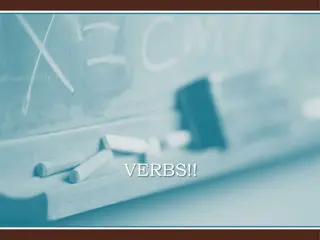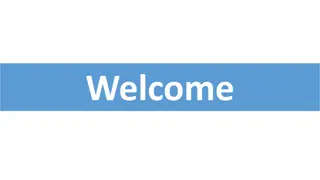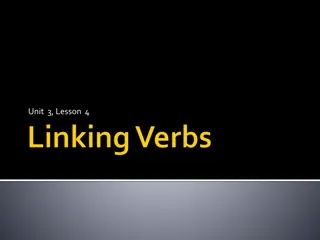Present Tense Verbs in Irish Grammar: Everyday Usage & Structure
Explore how to form and use present tense verbs in everyday Irish language with 2 to 2-syllable broad verbs, including rules for endings and changes. Learn how to ask questions, form negatives, and practice verbs for buying, hurting, and cycling with clear examples.
Download Presentation

Please find below an Image/Link to download the presentation.
The content on the website is provided AS IS for your information and personal use only. It may not be sold, licensed, or shared on other websites without obtaining consent from the author.If you encounter any issues during the download, it is possible that the publisher has removed the file from their server.
You are allowed to download the files provided on this website for personal or commercial use, subject to the condition that they are used lawfully. All files are the property of their respective owners.
The content on the website is provided AS IS for your information and personal use only. It may not be sold, licensed, or shared on other websites without obtaining consent from the author.
E N D
Presentation Transcript
Gramadach cuid a deich
An Aimsir Laithreach Gach L (Present Tense - Everyday) 2 2 syllable broad verbs syllable broad verbs In the present tense, there is no need to add a h like we did in the past tense. Instead, we add an ending to the root of the verb. There are four different endings in the present tense. For 2 syllable broad verbs in the present tense, we remove the second syllable (or the aigh part) and add a onn. For example Ceannaigh becomes Ceanna onn s He buys There is no m in the present tense. Instead we add aim to the root of the verb for broad verbs. For example Ceannaigh would become Ceannaim I buy The other difficult part is when we want to say we do something in the present tense. With broad verbs in the present tense, we drop the second syallable and add a mid. For example Ceannaigh becomes Ceanna mid We buy
An Aimsir Laithreach Gach L (Present Tense - Everyday) 2 2 syllable broad verbs syllable broad verbs The good news is that if a verb starts with a vowel in the present tense, the same rule still applies; just drop the second syllable and add a onn to the end of the root of the verb. Athraigh would become Athra onn s He changes
An Aimsir Laithreach Gach L (Present Tense - Everyday) 2 syllable broad verbs 2 syllable broad verbs Ceisteach agus Di ltach (Questions and Negative) To say that you didn t do something, we put N before the verb, h after the first letter, drop the aigh add and a onn after the verb e.g. gortaigh = N ghorta onn s . To ask a question in the present tense, we put An before and a onnafter the verb. We also need to put an ur before the first letter of the verb e.g. An ngorta onn t ? Seven letters and the vowels take an ur when you put An before it. Look at the list below. d g m n b bh n is the ur for is the ur for is the ur for is the ur for is the ur for is the ur for is the ur for t c b d b f g ar an dteach ag an gcarr ar an mbus r ndeoch dh bpingin ar an bhfuinneog on the window ar an ng ird n on the house at the car at the bus our drink two cents on the garden
An Aimsir Laithreach Gach L (Present Tense - Everyday) 2 syllable broad 2 syllable broad verbs verbs Cleachtadh - Practice ceannaigh to buy gortaigh to hurt rothaigh to cycle ceanna m I buy gorta m I hurt rotha m I cycle ceanna onn t You buy glana onn t You hurts rotha onn t You cycle ceanna onn s He buys glana onn s He hurts rotha onn s He cycles ceanna onn s She buys glana onn s She hurts rotha onn s She cycles ceanna mid We buy glana mid We hurt rotha mid We cycle ceanna onn sibh You(pl) buy glana onn sibh You(pl) hurt rotha onn sibh You (pl) cycle ceanna onn siad They buy glana onn siad They hurt rotha onn siad They cycle An gceanna onn t ? Do you buy? An ngorta onn t ? Do you hurt? An rotha onn t ? Do you cycle? N cheanna m I don t buy N ghorta onn s He doesn t hurt N rotha m I don t cycle
An Aimsir Laithreach Gach L (Present Tense - Everyday) 2 2 syllable broad verbs syllable broad verbs Quick Recap: 1. For verbs that begin with a vowel or a consonant, drop the aigh and add a onn e.g. ceannaigh = ceanna onn 2. There is no m in the present tense. Instead for broad verbs, drop the aigh and add a m e.g. ceannaigh = ceanna m 3. We add aimid to broad verbs in the present tense when we want to say we did something e.g. ceannaigh = ceanna mid 4. To ask a question, we use An, an ur , drop the aigh and add a onn e.g. ceannaigh = An gceanna onn t ? 5. To say the negative, we use N , drop the aigh part, add a s imhi (h) and a onn e.g. N cheanna onn s .
